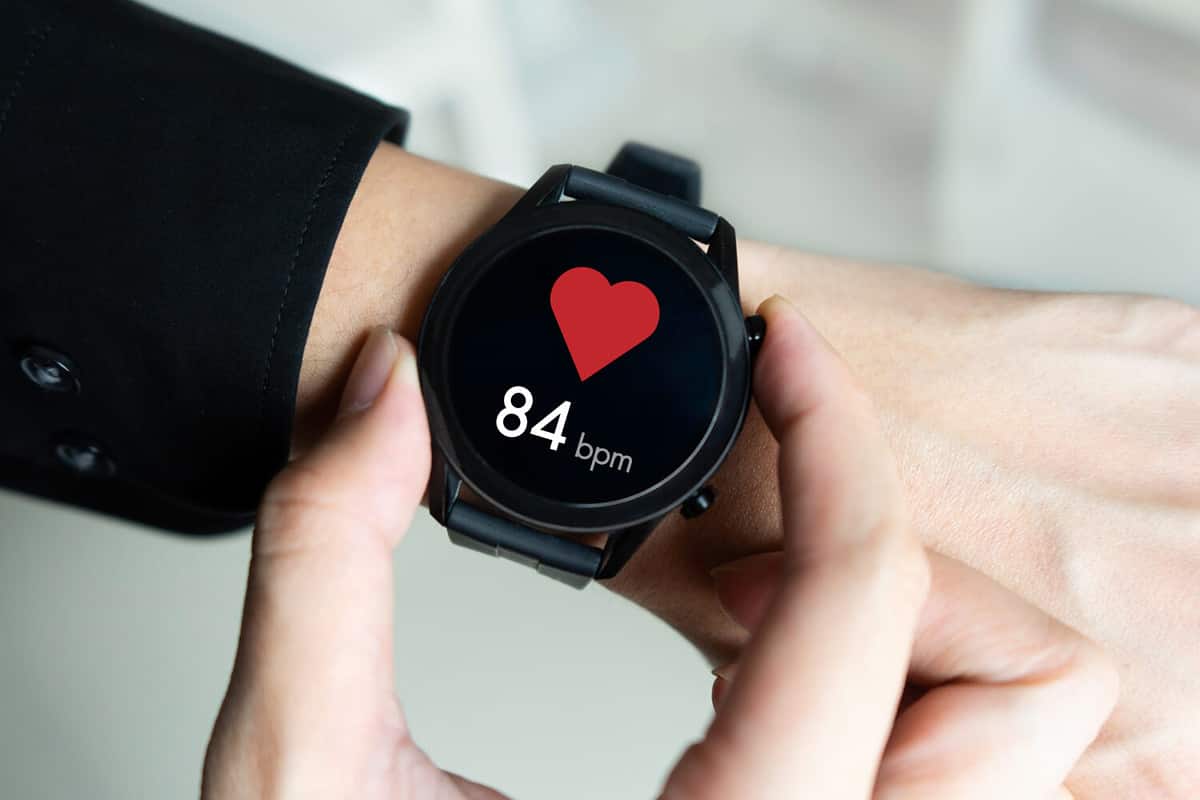A healthy resting heart rate is the kind of thing many of us take for granted. For most of us, our hearts beat the way they’re supposed to whether we think about it or not. If you’re wondering whether your rate is normal, it’s important to note there’s a difference between your active heart rate and resting heart rate. Your resting heart rate is the number of times your heart beats per minute while you're resting, or not engaging in physical activity.
Your heart rate says a lot about your overall health but it can also be impacted by numerous different factors. Keep reading to find out what a normal resting heart rate is and how to determine if your heart rate is healthy.

Your heart rate can change throughout the day depending on your activity level.
©Studio.c/Shutterstock.com
What Is a Healthy Resting Heart Rate?
Regardless of your age, level of physical activity, or overall health, it’s important to have a healthy heart rate. A healthy heart will speed up or slow down in certain circumstances and there are also numerous factors that can impact your heart rate.
There’s not one specific heart rate that is healthy for everyone, but a healthy resting heart rate for adults ranges between 60 to 100 beats per minute. However, there are a few cases when someone might have a healthy resting heart rate that falls outside of this range.
Well-trained athletes, for example, often have a lower resting heart rate. Someone who is a professional athlete might have a heart rate of 40 beats per minute and this could be normal for them.
There are also many factors that can impact your overall heart rate, but a resting heart rate that is consistently high or low without explanation could indicate a greater health issue. Before you decide whether your resting heart rate is within a normal range, let’s find out how you can determine your resting heart rate yourself.
How Do You Find Your Resting Heart Rate?
To find your resting heart rate, you’ll need to take your pulse. Here’s the simplest way to determine what your resting heart rate is:
- Find your pulse. Start by checking your wrist, underneath the side where your thumb is.
- Once you have located your pulse, press your middle and index finger against it lightly.
- Count the number of heartbeats in 30 seconds and then multiply that number by two.
- If it seems off, pay attention to when you’re checking your pulse. The best time to check it is first thing in the morning, so if it seems too fast, check it again at another time.
Your resting heart rate is the speed at which your heart beats consistently when you’re at rest. Checking your pulse or heart rate during a workout is going to lead to a higher number and this is known as your active heart rate. However, if you find that your heart rate seems too high or too low when you’re not engaged in physical activities or experiencing stress of some kind, discuss your concerns with your doctor.
What Can Affect Your Heart Rate?
The ability to speed up or slow down when necessary is a vital function of a healthy heart. While your resting heart rate is how fast your heart beats when you’re at rest, there are numerous factors that can impact your heart rate, including:
- Stress and anxiety
- Physical exercise
- Age
- Medication
- Body position
- Hormones
If you check your resting heart rate on a day when you’re stressed about something, you may notice that it’s higher than it should be. That’s why it’s important to know what your resting heart rate typically is so you know what’s normal for you.
It is normal for your heart rate to speed up or slow down at certain times. For example, your heart rate will speed up while you’re exercising or slow down while you’re sleeping. However, there are health conditions that could also impact your overall resting heart rate. A consistent resting heart rate that’s below or above the average range could indicate a health issue.
What Happens If Your Heart Rate Is Abnormal?
If your resting heart rate is higher or lower than the healthy range for most adults, there are several possible causes. Lower is typically better when it comes to a healthy heart because it means it's easier for your heart to beat steadily. But a heart rate that’s too low may be cause for concern. A consistently slow heart rate is known as bradycardia.
Bradycardia is a term used to describe a heart rate that falls below 60 beats per minute. A resting heart rate this slow is sometimes normal for those who are younger or physically fit, but it can also be caused by heart problems and other issues.
Some people with a low resting heart rate don’t show any other symptoms, but it’s important to contact a healthcare professional if you have a low heart rate along with any of the following symptoms:
- Fatigue or lack of energy
- Dizziness
- Chest pains
- Heart palpitations
On the other end, if you have a high resting heart rate of more than 100 beats per minute, this is called tachycardia. The biggest concern about this condition is that when your heart beats that quickly, some of your organs and other areas of your body may not get enough oxygen.
A consistent heart rate above 100 beats per minute may lead to the following symptoms:
- Chest pain
- Heart palpitations or fluttering
- Dizziness
- Fainting
- Lightheadedness
If you’re concerned that your resting heart rate is too low or too high, it’s best to talk with your healthcare provider to rule out any other health issues. Figuring out the cause of your abnormal heart rate is essential so you can find a solution and prevent any damage to your body.

It's normal for your heart rate to be higher when you're exercising.
©PeopleImages.com – Yuri A/Shutterstock.com
What About Heart Rate During Exercise?
Your resting heart rate is different than your heart rate during certain activities such as exercising. How fast your heart beats during physical exercise or other activities is known as your active heart rate.
However, there is a healthy standard for your active heart rate as well. According to the American Heart Association, here are the ranges of target heart rates based on age during moderate physical activity:
- 20 years: 100-170 bpm
- 30 years: 95-162 bpm
- 35 years: 93-157 bpm
- 40 years: 90-153 bpm
- 45 years: 88-149 bpm
- 50 years: 85-145 bpm
- 55 years: 83-140 bpm
- 60 years: 80-136 bpm
- 65 years: 78-132 bpm
- 70 years: 75-128 bpm
If you don’t engage in moderate physical activity often, your active heart rate will likely be higher. Those who are physically fit will have a lower resting and active heart rate. To find your maximum heart rate, you can subtract your age from 220.
Final Thoughts
There are many factors throughout the day that can contribute to your heart rate. Your resting heart rate is how fast your heart beats when you’re at rest and your active heart rate is how fast your heart beats during physical activity. A healthy resting heart rate for most adults is between 60 and 100 beats per minute.
Your heart rate will speed up during physical activity or slow down while you’re sleeping. However, a consistent resting heart rate above 100 beats per minute or below 60 beats per minute could indicate an issue with your heart. If you’re concerned that your resting heart rate is too low or high, it’s best to consult with your doctor to determine a potential cause.
The image featured at the top of this post is ©ViDI Studio/Shutterstock.com
